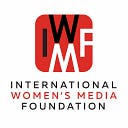Journalists are undertaking immense risk to help the world bear witness to Russia’s invasion of Ukraine. In this series, we speak with women of the IWMF community who are on the ground reporting on this conflict.
The following interview features 2017 Anja Niedringhaus Courage in Photojournalism Honorable Mention Nicole Tung, whose photography explores those most affected by conflict and the consequences of war.
What was your journey like getting into Ukraine and how have things changed since you arrived?
My journey getting into Ukraine was relatively easy compared to other journalists coming in. I was very lucky because I found a train that went from Warsaw all the way to Kyiv — a 16-hour train ride. On that train there were mostly Ukrainian men who were living abroad and trying to get back into the country to join the [defense] effort.
I’ve been here for over two weeks now, and I’ve stayed in Kyiv the whole time. I would say the biggest change is that there’s now a lot more targeting of residential areas in the city itself.
The danger level is now much, much higher.
What is the biggest challenge facing journalists — particularly women journalists — covering this conflict?
As foreign journalists, the main challenge aside from the level of danger has been access. I’m not even speaking of military-related things to photograph, but just trying to photograph checkpoints and bunkers or shelters where people are taking refuge is difficult unless there’s an organized press tour. It’s been pretty challenging.
For me, there really hasn’t been anything particularly gender related that has been a challenge, but there are so few women here on the ground. That said, there are a lot of Ukrainian female journalists who are doing an amazing job of covering this conflict. Seeing their home country under bombardment and the suffering that people are going through is incredibly difficult — having to report on it at the same time must be tenfold.
What story or moment has made the biggest impression on you while reporting on the conflict?
There have been a lot. One is seeing a husband and wife who were saying goodbye to each other at the train station in Irpin, near Kyiv. The mother or the wife was holding their 11-month-old baby and they were talking through the fence at the railway station. It was an incredibly emotional moment because he couldn’t leave the country. So the wife –Yana — was going take their son and flee, probably to Poland.
The gentleness of this moment, of them not knowing if they’re going to see each other again, really took my breath away. It was heartbreaking to watch. I felt compelled to photograph it, but also wanted to them to have their moment together, their last kiss before she boarded the train.
These very human moments are what stick with me, and the uncertainty that surrounds people in those moments.
Is there anything you wish the global community outside of the region knew about this conflict, or what journalists are going through?
People should know that the resolve of the Ukrainian people is incredibly strong. Not one person is not doing something — everybody is pitching in, no one’s just sitting at home. There are grandmothers who are out there cooking food for troops and civilians. Everyone’s doing their little part.
As for what journalists are going through, it’s really the physical danger and of course, the psychological trauma that especially Ukrainian journalists are going through. But the physical threats are real for every journalist right now because it’s so unpredictable.
Trying to cover this war, where things are happening in many different places and with a very advanced Russian military can be, as we’ve seen, fatal.
